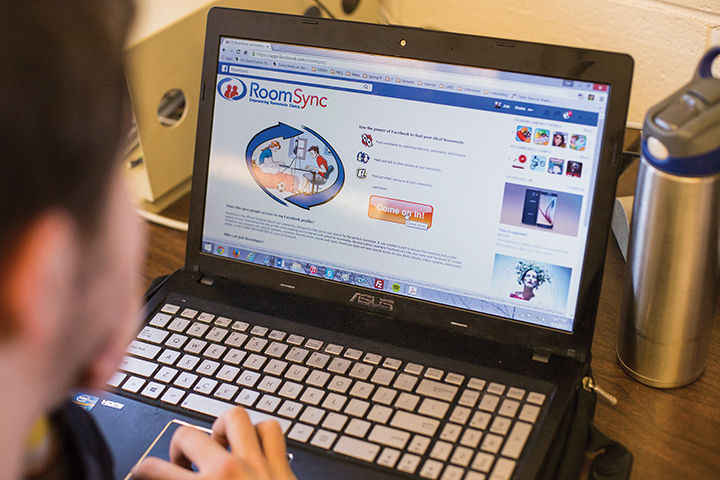
Last spring, sophomore Courtney Cooper didn’t have anyone to live with, but she didn’t want to end up rooming with a complete stranger.
Cooper was one of 672 students out of 27,056 undergraduates and 3,975 incoming freshmen who used RoomSync, an online roommate-matching software that uses Facebook to help students connect.
In recognition of the software’s limited use, Residence Hall Association members and Department of Resident Life officials are discussing marketing techniques to increase awareness about the program and encourage more students to use it.
“[It] can offer a handful of potential roommates after you create your RoomSync profile, making it easier to contact potential roommates,” said RHA Resident Life Advisory Team chairwoman Sasha Galbreath.
RoomSync features a more in-depth questionnaire than the standard questions students find on their Resident Life housing portals, such as whether they’d be bothered living with someone who smoked and if their room is their preferred place of study.
“It’s like an online dating website for roommates,” said Cooper, a linguistics and Spanish major. “The girl I met on RoomSync was really nice, and it actually worked out really well.”
However, not many people use the program, which costs $5,000 per year to operate.
Resident Life started using RoomSync in winter 2012. Between 2012 and 2013, about 580 students participated in the program. That number rose to 678 students between 2013 and 2014. And for the 2014-15 academic year, 672 students have participated in RoomSync.
“The number of students who use it has increased, which is good, but it’s not as much as we would have hoped,” said Scott Young, assistant director of Resident Life. “Honestly, I think the problem is we need to do a better job of promoting it.”
Young said Resident Life’s contract with RoomSync will expire in the next few weeks, but the department plans to renew the contract for one year.
After this one-year contract renewal, Young said, Resident Life will re-evaluate the program and its usefulness for students. He said the department will send out a survey to students who participated and ask how they felt about the program and whether it was valuable.
“We’ll be able to assess whether people thought it was useful, not useful, if there is a better format we could try,” he said. “We want to determine if it’s money well spent.”
Cooper said that though she found the program worthwhile, Resident Life should put more effort into advertising it. While she ended up having a good experience, she said her options were limited.
Galbreath said the pool of possible roommates is so small that it makes it difficult to find a suitable match. Young said living-learning programs can also impact people’s ability to find roommates, as students often have to live with others enrolled in their programs.
“So it could be a pool of 1,000 to 2,000 on-campus students, but when divided for living-learning programs, that pool becomes much smaller,” Young said.
Hopefully, Galbreath said, increasing the number of participants will make the program more helpful.
“I think part of the reason people aren’t on it is because they don’t know about it,” Cooper said. “If people used it more, I think it would be a great resource, especially for freshmen and sophomores.”



